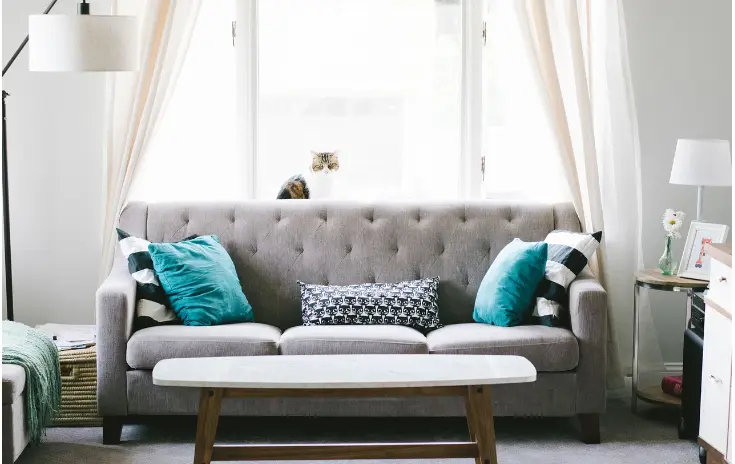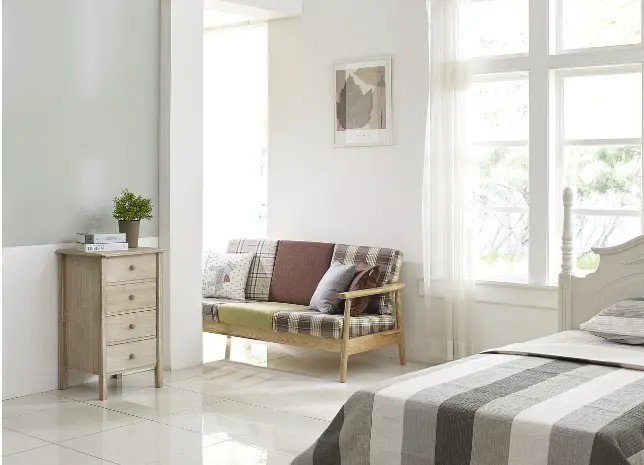Should I Furnish My Single-Family Rental?
For property investors with single-family rental homes, the question of how much to include with a property is an important consideration. Most renters will expect a rental house to include some appliances and perhaps blinds on the windows. But the bigger question is whether and how much a property investor should furnish their rental home. For short-term renters, a furnished house may be appealing, but long-term renters are different. Because they plan to stay for several years, they are looking for a place they can make feel like their own. For single-family rentals, there are many reasons why furnishing the home is both unnecessary and impractical.

Perhaps the biggest reason is that most of your renters probably will not like the furniture someone else buys for their rental. Personal taste varies widely, and few things are more personal than home furnishings. Prospective tenants may like the rental home, but ask whether the furnishing can be removed.
This can put a property owner in a difficult situation. Furnishing and then removing all furnishings from a rental house is a huge investment in both time and money. But by insisting that tenants live with the furnishings you buy for your rental property, you run the risk of significantly reducing your pool of possible tenants. There are other disadvantages to furnishing a long-term rental home. For example, odds are high that even a conscientious renter will not treat your furniture as if it were their own.
If the renter doesn’t like or want the furniture, that may further complicate things. They may not care for the furniture properly, or even abuse or damage things. They may try to move the furniture themselves to make room for their own, which may result in damage, improper storage, or even losing furnishings in the shuffle. Furnishing a rental home adds another layer of difficulty for the owner due to the need to track and monitor furnishings in addition to the home itself. Doing so raises a number of important questions about how this will be done. In the event that your owner-provided furnishings are damaged, how would that damage be monitored and documented? How much damage constitutes normal wear and tear, and how much is negligence?

It may be nearly impossible to keep track of every fabric tear, ding, scuff mark, and so on. Another question furnishing a rental home raises is what happens if a piece of furniture or décor is damaged beyond repair or goes missing? Many renters will not report damage for fear of being charged for the item’s replacement, and so you may not even find out something has been damaged until they move out years down the road. And if they inadvertently lose one or more furnishings by shuffling them in and out of a garage or storage unit, you’ll not only need to deal with the item’s replacement but with recouping the cost of the item from the tenant as well.
For short-term rentals, such as vacation or corporate rentals, offering them as partially or fully furnished is a necessary part of doing business. But for property investors who market their single-family homes to long-term renters, furnishing the property is not only unnecessary, it may also make renting and managing the property much harder than it needs to be. When questions of whether to furnish a rental home arise, the professionals at Real Property Management can help. We advise our property investors on solid business strategies and best practices that make renting and maintaining quality long-term rental homes a streamlined, profitable endeavor.
We are pledged to the letter and spirit of U.S. policy for the achievement of equal housing opportunity throughout the Nation. See https://www.realpropertymgt.com/eho/ for more information.
We are pledged to the letter and spirit of U.S. policy for the achievement of equal housing opportunity throughout the Nation. See Equal Housing Opportunity Statement for more information.
Get the Neighborly App
In addition to Real Property Management's expert skills in managing your rental property, you can utilize Neighborly's other brands to maintain and enhance your home. Use the Neighborly App to get connected to local home service professionals. Download and receive offers only available on the App.
Depending on current health and safety regulations in your area, some of the services mentioned in this post may not be available. Neighborly service providers will follow the latest health and safety guidelines provided by the local and state governments. Please check with your local Neighborly service provider for details at the time you need service(s).






